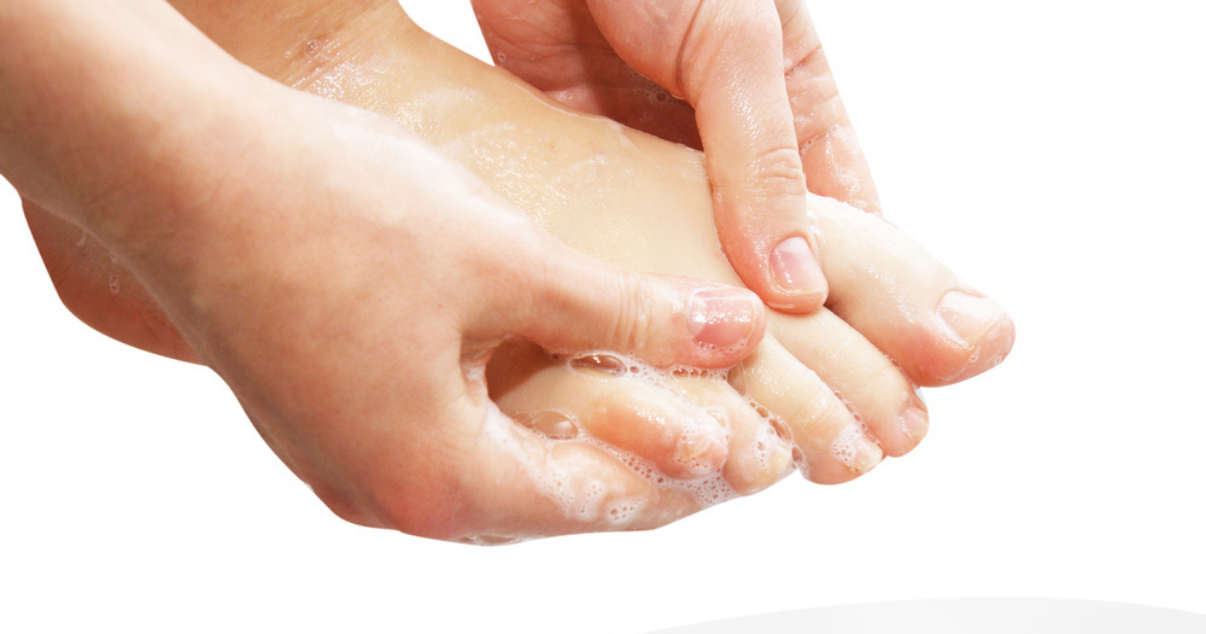The evenings are getting lighter and the birds start to sing, as the calendar reminds us that spring is right around the corner.
After a winter of staying home, many of us are looking forward to the chance to get outside and enjoy the change in season.
But what should you keep in mind before showing the world your feet? How could you prevent athlete's foot while enjoying the outdoors? Today we’ll take a look at what you can do to keep your feet healthy and looking good this Spring.
Springtime Foot Hygiene
As the weather gets warmer, make sure to swap hot winter boots for a pair of breathable sneakers. Keeping your feet cool and preventing them from becoming excessively sweaty is a great way of preventing athlete’s foot.
Remember to try and always wear footwear made from natural fibers like cotton socks and leather shoes to ensure air flows easily around your feet.

If you love to be outdoors and active, you might be excited about getting some exercise like running and cycling. Since exercise can make you sweat more, particularly in warmer weather, it’s important to keep these vital foot care tips in mind:
• Alternate your pairs of shoes to let them dry out completely before wearing the same pair again.
• Wash your feet with warm water and mild soap immediately after exercising. Always pay more attention to the spaces between your toes.
• Change into a fresh, clean pair of socks following exercise. Wearing the same pair of damp, dirty socks only encourages fungal spores to multiply and may increase your chance of an infection.
• If you’re planning on using communal changing facilities always pack a pair of flip-flops. Wearing sandals or flip flops creates a barrier between your feet and the floor which may have athlete’s foot spores on it. Athlete’s foot or tinea pedis thrives in hot and humid places like gym changing facilities or swimming pool floors. To prevent the foot fungus from taking hold, it’s important to prevent your feet from touching the floor.

To take your foot care routine to the next level, you could try using foot powder. Foot powder helps absorb excess moisture and keep your feet feeling fresh. Preventing your feet from getting too sweaty is a key foot care step for keeping athlete’s foot away.
Athlete’s Foot Symptoms
If you’re unsure of what athlete’s foot is like, it’s worth reminding yourself of the common foot fungus symptoms. Athlete’s foot often presents itself as red, itchy, peeling, and cracked skin on the feet.
Known as tinea pedis, it’s a contagious fungal infection that affects the skin on the feet and can easily spread to the toenails.
For more details about the foot fungus and athlete’s foot symptoms check out our post, What is Athlete’s Foot?

How to Prevent Athlete's Foot
Direct or indirect contact with an infected area or object is one of the main causes of athlete's foot. If you come into contact with contaminated objects like clothes, towels, or surfaces like bathroom, shower or locker room floors, you can easily contract the foot fungal infection.
Remember that the athlete’s foot fungus thrives in warm and damp conditions. So if your feet are sweaty after exercise or they sweat in tight footwear, you may be encouraging the fungus to thrive.
Read more about how to get rid of sweaty feet in our blog post on this topic.

What If You Already Have an Athlete's Foot Infection?
After long winter days spent inside wearing thick socks, you may have already developed an athlete’s foot infection.
If you think you might have an athlete’s foot infection, it’s best to start a treatment plan as soon as possible. Even if you have a mild case of athlete’s foot, it’s important to treat it quickly to prevent it from developing on your feet, spreading to other areas of your body, or passing the infection on to other people.
Before you start flaunting your feet to the rest of the world, make sure you use a tried and tested foot fungus treatment to eradicate your athlete’s foot infection. While there are plenty of over the counter creams and powders designed for treating athlete’s foot, some of them may take up to four weeks to eliminate the foot fungus.

For a quick and proven athlete’s foot treatment, we recommend using Silka Ⓡ Antifungal Cream. When you apply Silka Ⓡ Antifungal Cream consistently according to the instructions, your athlete’s foot infection will require just 7 days of treatment.
Take care!




